The "Grey Ghost" reloaded
Who could have foretold that the old US Army "Grey Ghost", as the M8 Greyhound reconnaissance armored car from WW2 is known, would have a successor that would be in service in the 2020s and probably beyond? Another American country, Brazil, operated M8 Greyhounds during WW2 in Italy and kept them in service up until the late 60s. At this point, the Brazilian army decided to replace these venerable old vehicles. Engesa designed a replacement, the Cascavel which, while sharing few parts, kept the same layout as the old US vehicle. Furthermore, the first batches kept the old turret with the 37 mm (1.46 in) gun. The Cascavel and its close cousin, the Urutu APC, have been produced in the thousands for domestic use and exports, seeing action in many conflicts around the globe.Development of the Cascavel
The project of replacing the local M8 Greyhound fleet was entrusted to the Engesa company, based in S. José dos Campos (São Paulo) in 1970. Although the turret and its 37 mm (1.46 in) armament were clearly obsolete, the upgrades mostly concentrated on the engine, increasing the top speed and autonomy of function substantially. The initial Engesa engine delivered 158 hp. In Portuguese, which is the official language in Brazil, Cascavel means "rattlesnake". The Cascavel I or Cascavel Magro ("Thin Rattlesnake") was the initial Brazilian upgrade, ready for production in 1974.Design
The Cascavel I was similar in many ways to the old Greyhound. It had a completely new welded hull, which was longer by 20 cm and higher, and was armored by 6 to 12 mm (0.24-0.47 in) thick two-layer steel plating. This provided full protection against heavy machine gun rounds on the frontal arc.The old M8 could be still seen under the skin though, due to the general proportions, the location of the turret, the engine, the crew and the roadwheels. However, the tires were bigger, likely in order to improve cross-country performances. The turret ring was also reinforced to house a closed M3 Stuart turret or a new turret which was lower and lighter, but also similar from the front to the M8 Greyhound one. The total weight was 10,900 kg empty and up to 13,400 kg combat ready, about 1/3 more than the original 8.6 short tons of the US vehicle. However, mobility did not suffer much from this, as a brand new engine provided by the US. This new powerplant developed 158 hp, instead of the 110 hp in the M8. The suspension was reinforced and redesigned by Engesa, the rear wheels sitting on a Double Axle Boomerang Drive. The vehicle was a full 6x6. As a result of these upgrades, the top speed was around 90 km/h (55 mph) on road.
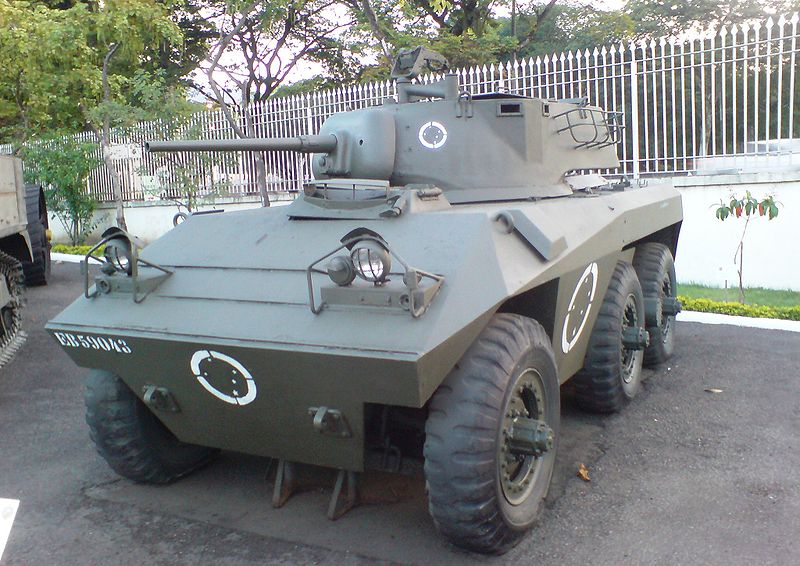
Cascavel Magro with the production turret.
The Cascavel II (Cascavel Gordo, "Fat Rattlesnake") appeared because the old Stuart turret was obviously obsolete by the 1970s. Any potential anti-armor use of the puny 37 mm gun was nothing but laughable at that point. In order to increase the Cascavel's appeal for the export market, it was decided to design an upgrade with a larger turret ring for the French H 90 turret with a 90 mm DEFA D 921 gun. This was the same turret/gun combination used by the Panhard AML which targeted the same market segment. This version was a real export success for Engesa.
The Cascavel III was created in the early 1980's with the intent of providing the Cascavel with a better punch than that of the low-pressure 90 mm (3.54 in) DEFA gun. The Cascavel III was given a new turret designed by Engesa. This turret was fitted on the same turret ring and was armed with a Belgian Cockerill 90 mm (3.54 in) gun. The secondary armament consisted of a coaxial 7.62 mm (0.3 in) Browning LMG or Belgian FN Mag. The Browning M2HB 12.7 mm (0.5 in) heavy machine gun could be used on the outside pintle mount. The engine was upgraded to a Detroit Diesel 6V-53N, 6-cylinder water-cooled diesel giving 212 hp. It propelled the vehicle to a top speed of 100 km/h (60 mph) and an overall range of 800 km (500 mi). The headlights and road lights were integrated inside the front armor. This model was quite successful, probably more than any other version of the Cascavel as far as export is concerned. The gun upgrade, in particular, gave it far superior antitank performance. The MECAR Kenerga 90/46 round and M603 round had a muzzle velocity speed of 1,430 m/s*.
The Cascavel IV is the latest generation of the Brazilian vehicle. It was built around the idea of having a greater commonality of parts with the EE-11 Urutu APC/IFV, including the same powerful 230 hp diesel engine and transmission. This allows it to reach a top speed of 100 to 110 km/h (60-70 mph) on flat ground and up to 80 km/h (50 mph) cross-country. It was also given new improved day/night optics and a laser rangefinder. Unfortunately, the production of this version was short-lived, with Engesa going bankrupt in 1993. The company was sold to Embraer. However, it is not known if the company will choose to reinvigorate this division or propose the Cascavel IV as an upgrade for the domestic market or export.
A Brazilian export success
No oher Brazilian armored vehicle ever had such success on the international market. Relatively simple and affordable, the EE-9 Cascavel came as a solution for emerging local powers to secure a fast response vehicle suited for flat, dry expanses where armored cars are more at ease than tanks. The Cascavel I was mostly a local upgrade, but the export first successes came with the Cascavel II armed with the French H 90 turret, sharing similar components with the AML-90. The peak was achieved in 1983, Engesa's order books being filled. The Cascavel III, with its Belgian 90 mm (3.54 in) Cockerill gun and larger turret, was even more successful.However, the company suffered an estimated 200 million dollars in Iraq. Furthermore, the rejection of the Osorio main battle tank, entirely funded by Engesa, proved too much and the company went bankrupt in 1993.
Users include: Bolivia (24), Brazil (600), Burkina Faso (24), Burma (150), Chile (83 -former operator), Chad (5 -former operator), Colombia (120), Cyprus (126), Democratic Republic of Congo (19), Dominican Republic (20), Ecuador (28), Gabon (14), Guyana (6), Iran (35), Iraq (400), Libya (500), Nigeria (75), Paraguay (28), Qatar (20), Sahrawi Arab Democratic Republic, Suriname (7), Tunisia (24), Uruguay (15), Zimbabwe (90).
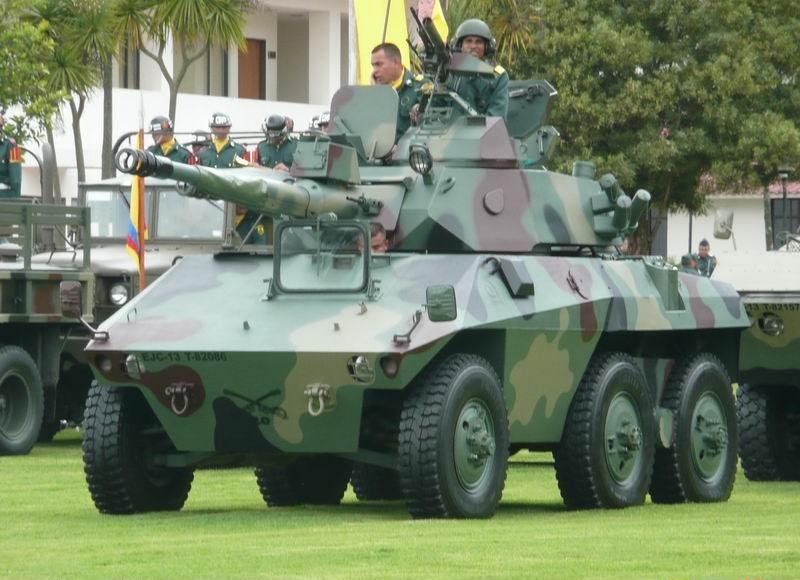
Colombian Cascavel II.
Operational career
Brazil still maintains its Cascavels for reconnaissance duties, with the biggest operational park today, of around 600 vehicles. Like other vehicles of the same type, the Cascavel compensates for its lack of armor with very good mobility, having a top speed of 110 km/h (70 mph). With only Chile no longer maintaining its vehicles in service, 22 countries had it in their arsenal in the 1980-90s, and the Cascavel was well tested in combat. The Iraqi Cascavels were especially numerous in Saddam's arsenal by 1991, with 400 vehicles in service. However, they were never paid for due to the US invasion, creating a net loss of $200 million for its manufacturer. Many were destroyed during the Iran-Iraq war, in Operation Desert Storm, and later during the Iraqi war in 2003, but surviving vehicles are still in service with the new Iraqi Army. Their armor could not cope with AP rounds fired by the standard-issue 25 mm (0.98 in) autocannons of the Bradley and LAV-25.The second largest park of vehicles was acquired by Libya with 500 vehicles, largely used in the Chadian–Libyan conflict. The Chadians managed to capture five vehicles, which are no longer in service. Libyan Cascavels were also well-used in the Libyan civil war. Other operational uses include the Second Congo War, the internal conflict in Burma, and Colombian civil war.
Links
EE-9 Cascavel on WikipediaMore about the Cockerill gun
EE-9 M4 ET-25
EE-9 specifications |
|
| Dimensions | 5.2 x2.64 x2.68 m 17 x8.6 x8.8 ft |
| Total weight, battle ready | 13.4 tons (26,800 lbs) |
| Crew | 3 (driver, commander, gunner) |
| Propulsion | Detroit 6V-53N, 6-cylinder water-cooled diesel, 212 hp |
| Suspension | 6x6 Double Axle Boomerang |
| Speed (road) | 100 km/h (62 mph) |
| Range | 880 km (560 mi) |
| Armament | 90 mm (3.54 in) cannon 12.7 mm (0.5 in) AA HMG 7.62 mm (0.3 in) LMG |
| Armor | 6–12 mm doubled steel plating (0.24-0.48 in) |
| Total production | 2,767 in 1974-1993 |
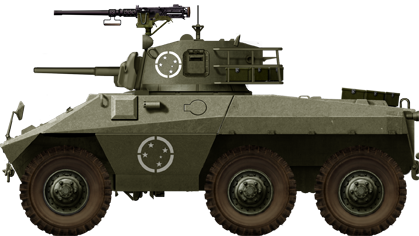
The first series Cascavel I with the provisional M3 Stuart turret (1974).
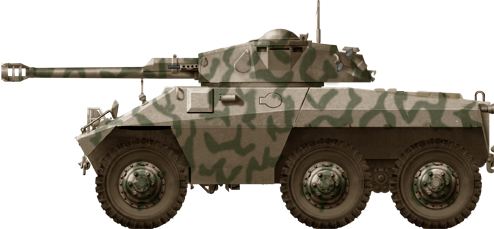
Libyan Cascavel II, fitted with the H 90 turret.
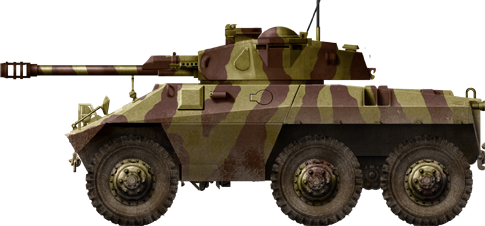
Bolivian Cascavel Gordo.
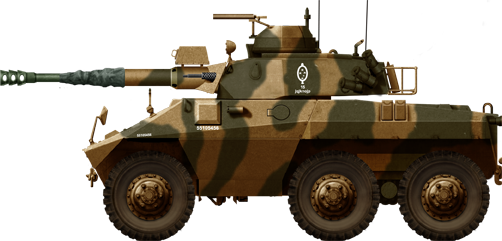
Brazilian Cascavel III
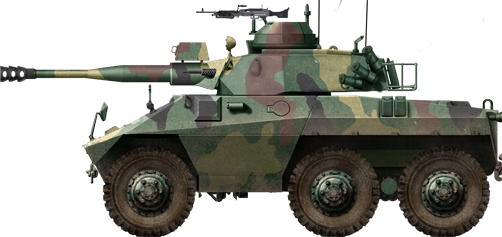
Colombian Cascavel III
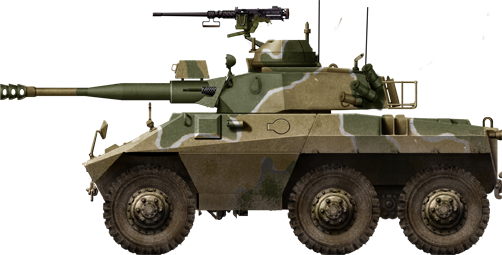
Cypriot Cascavel III
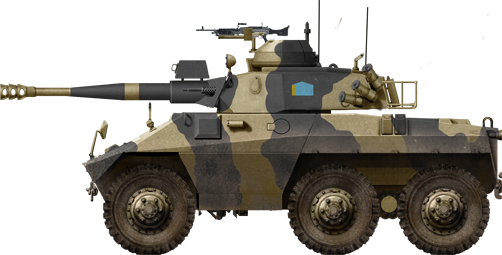
Iraqi Cascavel III in 1991
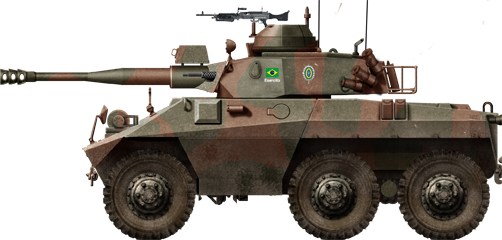
Brazilian Cascavel IV, 1990s.
Gallery
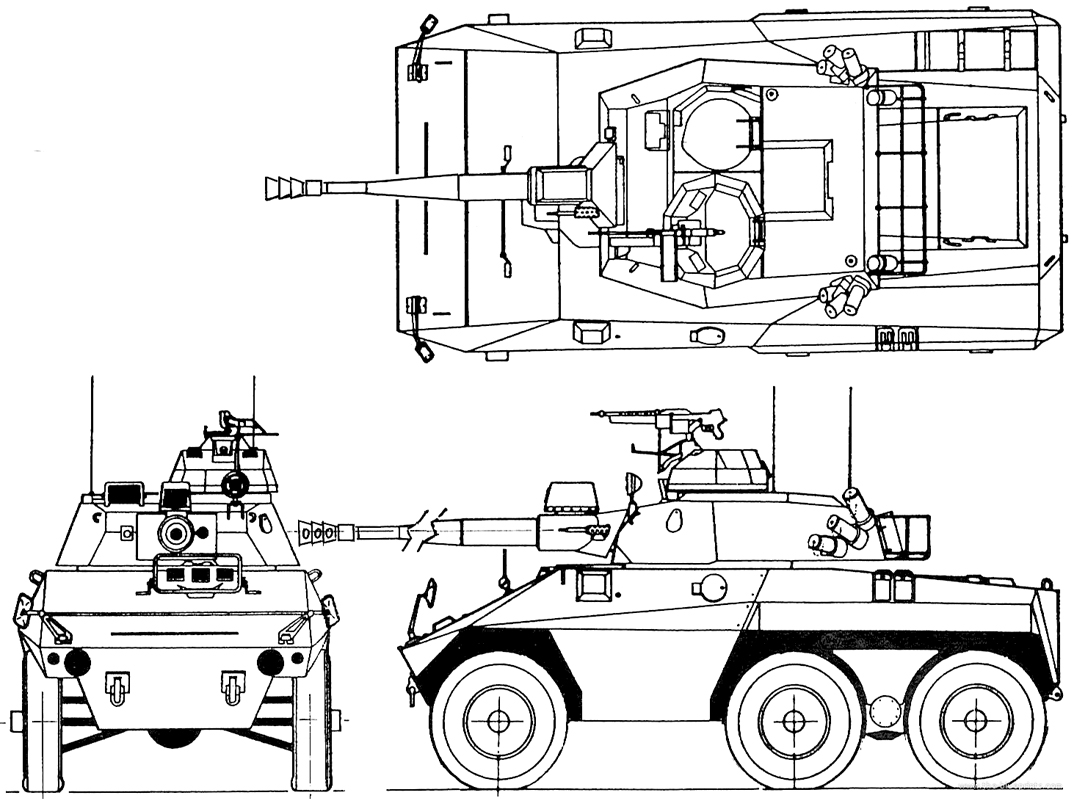
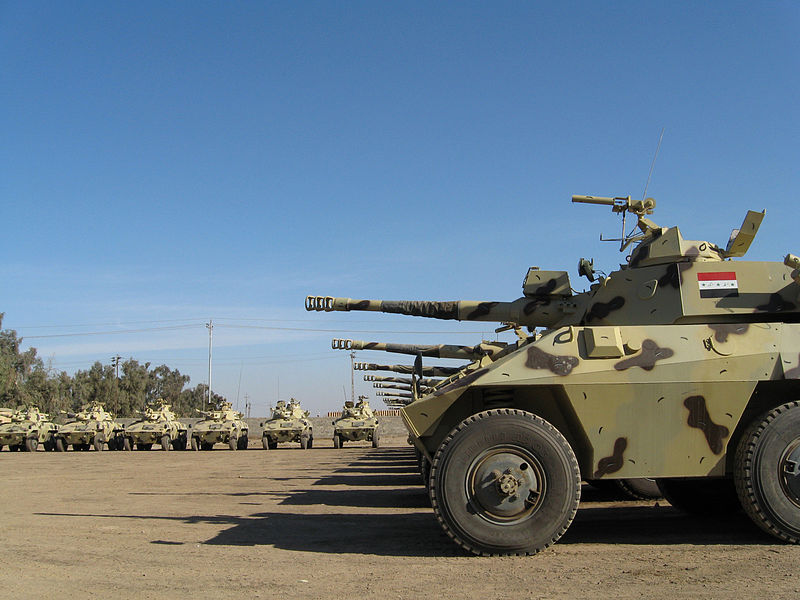
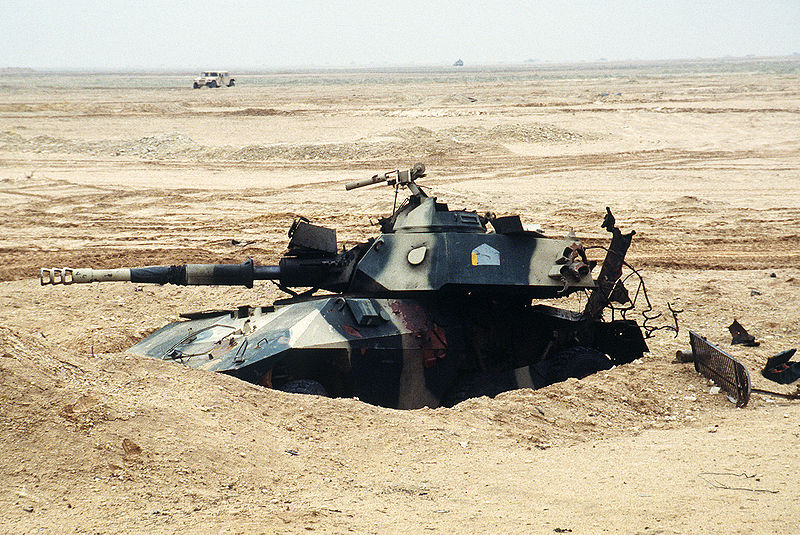
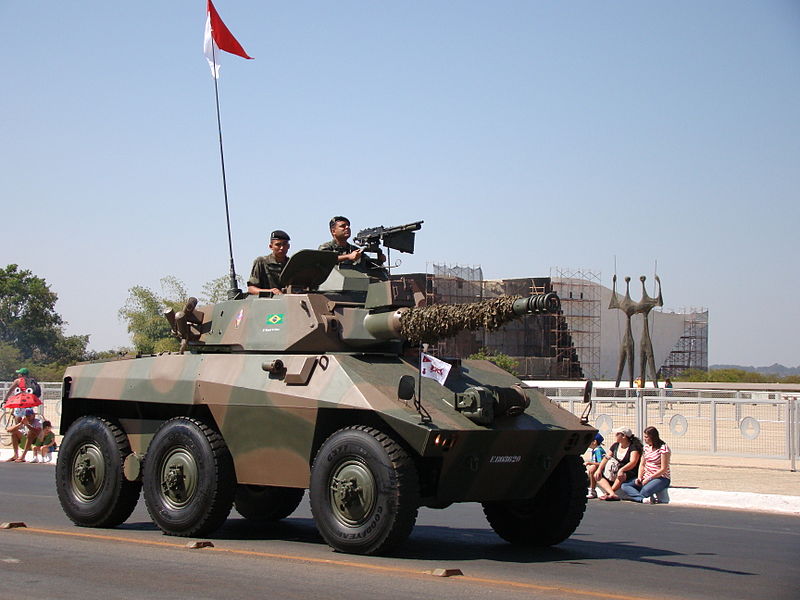
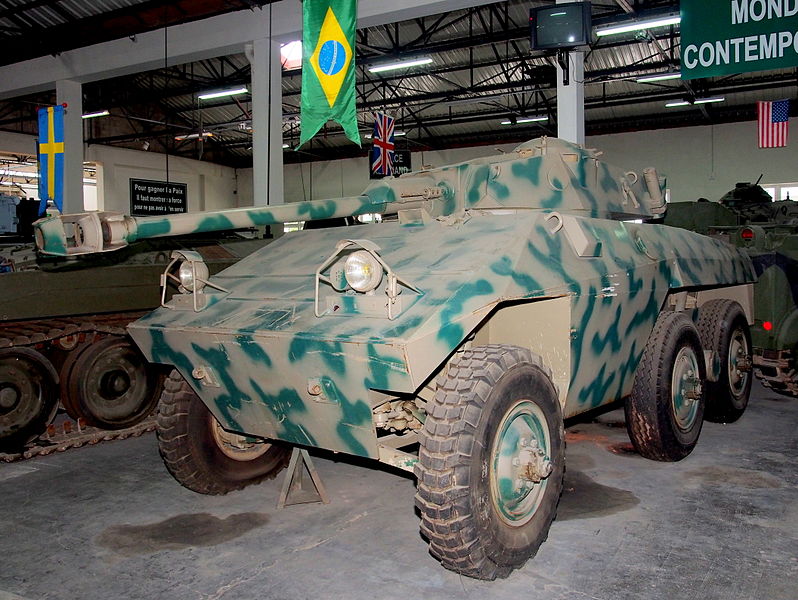
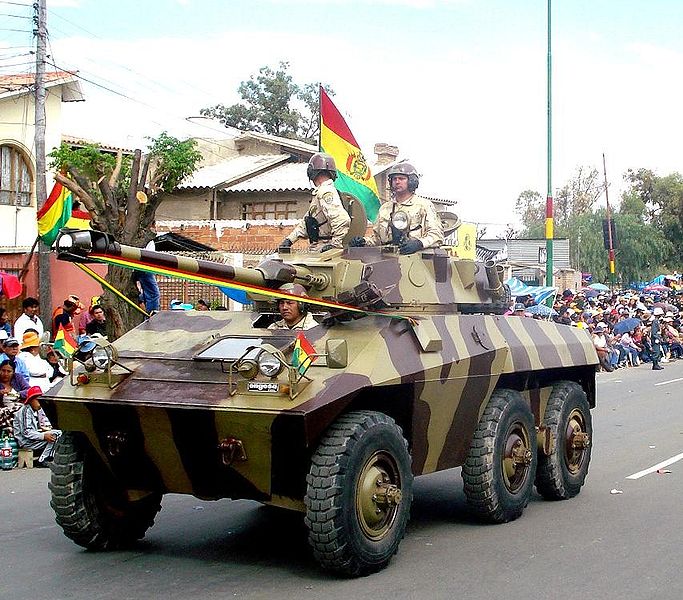
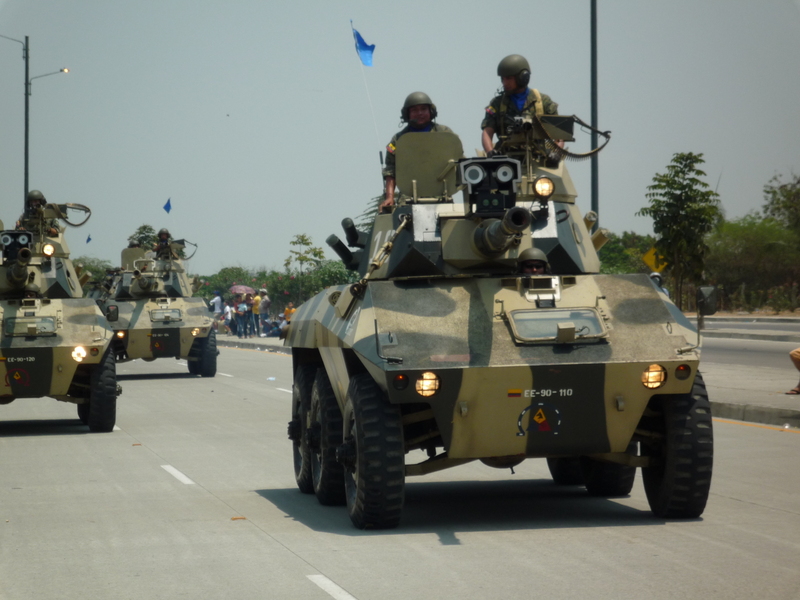
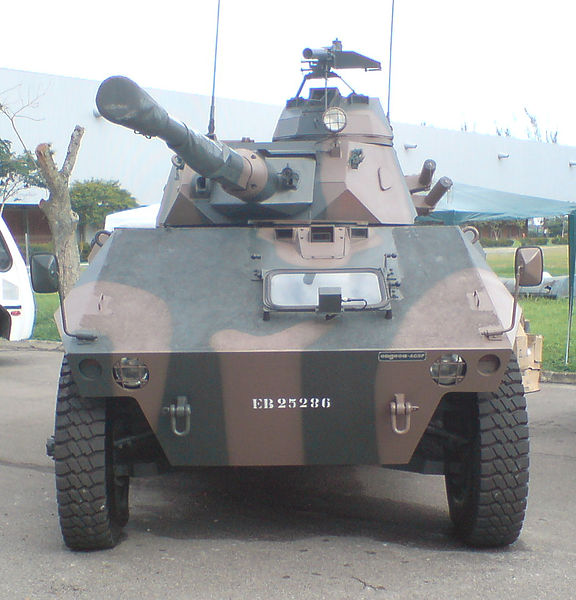

Cold War Tanks


































Cold war tanks posters

Cold War Main Battle Tanks

Cold War Soviet Army
Museums, Movies, Books & Games
The Tanks and Armor in pop culture
Tanks and armored vehicles in general are only really grasped when seen first person: The mass, the scale, it's all there. Explore also the way tanks were covered in the movie industry, in books and in video games.Movies:
Best tanks movie on warhistoryonline.com
On imdb.com
On bestsimilar.com/
miltours.com
liveabout.com/
watchmojo.com
Video Games:
pcgamesn.com
historyhit.com
levvvel.com
vg247.com/best-tank-games
mmobomb.com/
alienwarearena.com

